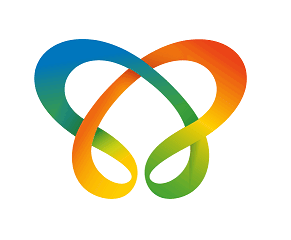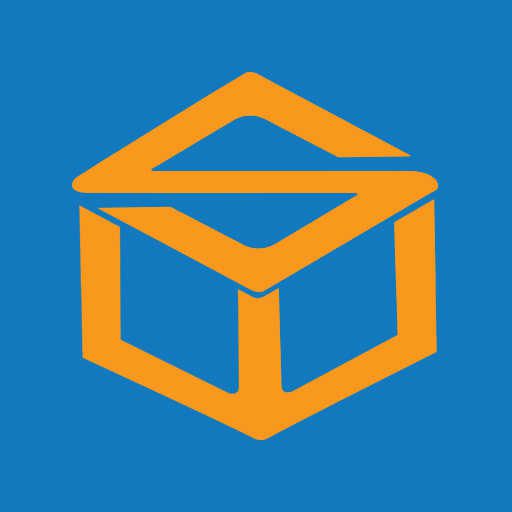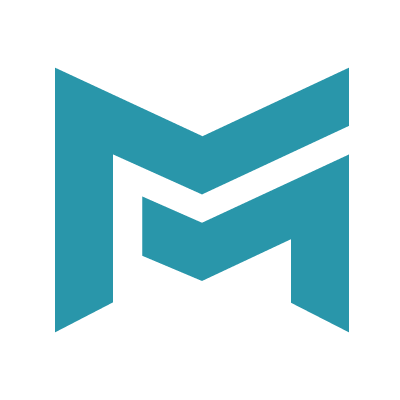Description

Inoday eCommerce Solution

Take App
Comprehensive Overview: Inoday eCommerce Solution vs Take App
Inoday eCommerce Solution and Take App are two distinct offerings in the digital commerce landscape. Below is a comprehensive overview of each, covering their primary functions, target markets, market share, user base, and key differentiating factors.
Inoday eCommerce Solution
a) Primary Functions and Target Markets:
- Primary Functions: Inoday eCommerce Solution is designed to provide comprehensive eCommerce capabilities. This includes functionalities such as product catalog management, shopping cart, payment gateway integration, order management, inventory management, and potentially CRM tools for managing customer relationships. It likely leverages ERP systems to streamline operations, given Inoday's background in NetSuite implementations.
- Target Markets: Inoday primarily targets small to medium-sized enterprises (SMEs) that require integrated eCommerce solutions with robust backend support. Their focus is often on businesses that need comprehensive ERP integration to optimize supply chain, distribution, and financial processes alongside online sales.
b) Market Share and User Base:
- Market Share: As a service provider specializing in the implementation of platforms like NetSuite, Inoday's market share in terms of eCommerce solutions isn't as dominant as standalone eCommerce giants like Shopify or Magento. However, it holds a niche position for businesses seeking deep ERP integration.
- User Base: The user base is typically businesses that are existing customers of NetSuite ERP or those looking for a tightly integrated ERP and eCommerce solution.
c) Key Differentiating Factors:
- ERP Integration: A significant differentiator is its ability to seamlessly integrate with NetSuite ERP, providing businesses with a unified platform.
- Customization: Offers a high level of customization tailored to specific business needs, particularly those requiring robust backend system integration.
- Service and Support: Includes professional support and consultancy, which is crucial for businesses that need ongoing technical guidance.
Take App
a) Primary Functions and Target Markets:
- Primary Functions: Take App focuses on simplifying the process of creating an online store through integration with popular messaging apps like WhatsApp. It allows businesses to manage orders and interact with customers directly through these platforms. Key functionalities include a user-friendly storefront, direct order-taking via apps, and payment processing.
- Target Markets: Targets small businesses and entrepreneurs, particularly those in emerging markets, who are looking for low-barrier entry into eCommerce without complex setups. It's particularly appealing to those who want to leverage existing customer communication channels.
b) Market Share and User Base:
- Market Share: Take App likely holds a modest share in the eCommerce space, specifically catering to small businesses in regions where WhatsApp has significant penetration. It competes with lightweight eCommerce solutions that emphasize ease of use over complex features.
- User Base: Primarily consists of small businesses and individual entrepreneurs who are looking for simple, cost-effective ways to sell online while maintaining close communication with customers.
c) Key Differentiating Factors:
- Simplicity and Ease of Use: Take App distinguishes itself by offering a straightforward setup with minimal technical requirements. This is ideal for users who are not tech-savvy.
- Integration with Messaging Platforms: Its seamless integration with messaging platforms like WhatsApp is a significant advantage, as it allows businesses to meet customers where they already are.
- Affordability: Often more affordable than comprehensive eCommerce solutions, making it an attractive option for budget-conscious businesses.
Conclusion
In summary, Inoday eCommerce Solution and Take App serve different customer needs within the eCommerce sector. Inoday offers a robust solution for businesses seeking deep ERP integration, appealing to SMEs with complex requirements. In contrast, Take App provides a straightforward, cost-effective solution for small businesses aiming to operate within a more direct and personal customer interaction paradigm through messaging apps. These differing approaches to eCommerce reflect their target markets, feature sets, and value propositions.
Contact Info

Year founded :
Not Available
Not Available
Not Available
Not Available
Not Available

Year founded :
2021
Not Available
Not Available
Singapore
http://www.linkedin.com/company/take-app
Feature Similarity Breakdown: Inoday eCommerce Solution, Take App
In comparing Inoday eCommerce Solution and Take App, it's essential to assess their features to understand their similarities, user interface design, and any unique aspects that differentiate them.
a) Core Features in Common
Both Inoday eCommerce Solution and Take App likely share several core features typical of eCommerce platforms:
-
Product Management: Both solutions probably offer functionalities for adding, editing, and organizing products within the platform, including product descriptions, pricing, and inventory control.
-
Shopping Cart and Checkout: These platforms might include a shopping cart system and checkout process, supporting multiple payment gateways for facilitating transactions.
-
Order Management: Features for tracking, managing, and processing customer orders, including notifications and order status updates.
-
Customer Management: The ability to manage user accounts, customer data, and provide customer support tools.
-
Analytics and Reporting: Basic analytics tools to help monitor sales performance, customer behavior, and other critical metrics.
-
Integration Capabilities: Both platforms are expected to allow integration with third-party services and applications, such as CRM systems or email marketing tools.
b) User Interface Comparison
Without specific visual insights into both interfaces, one can generally compare user interfaces in terms of:
-
Ease of Use: Both might strive for intuitive navigation, with simple, clean designs intended to reduce the learning curve for new users.
-
Customization: Each platform may offer different levels of customization in terms of theming, layout, and user experience personalization.
-
Responsiveness: Ensuring that the user interface performs well on both desktop and mobile devices is likely a priority for both.
c) Unique Features
While both solutions share core eCommerce functionalities, they might distinguish themselves with unique features:
-
Inoday eCommerce Solution Unique Features:
- Could offer specialized modules or services targeting niche industries, particularly if tied to broader enterprise resource planning (ERP) solutions spearheaded by Inoday.
- Might include advanced B2B features or deep integration with specific business management tools of which they are a vendor.
-
Take App Unique Features:
- May focus on a more streamlined or simplified setup process geared towards smaller retailers or individuals starting with minimal technical expertise.
- Potential emphasis on specific market verticals, such as social commerce or integrations with social media platforms for seamless social selling functionality.
Ultimately, the unique features would depend on the target market each is serving, with potential variations in scalability, pricing tiers, and support services offered. For precise details, examining their official documentation, feature lists, or conducting a direct product comparison would yield the best insights.
Features

Not Available

Not Available
Best Fit Use Cases: Inoday eCommerce Solution, Take App
Inoday eCommerce Solution:
a) Best Fit Use Cases for Inoday eCommerce Solution:
-
Small to Medium-Sized Enterprises (SMEs): Inoday's eCommerce solutions are ideal for SMEs looking to establish a robust online presence without investing heavily in infrastructure. These businesses often seek scalable solutions that can grow with them as they expand their operations.
-
Retailers Seeking Omnichannel Solutions: Businesses aiming to provide a seamless customer experience across multiple channels (online, physical stores, mobile) would benefit from Inoday’s integrated eCommerce platforms. This includes inventory management, order processing, and customer service.
-
Customizable Platforms for Niche Markets: Companies catering to niche markets or requiring bespoke eCommerce functionality will find Inoday's solutions flexible and customizable. This could include businesses needing specific integrations or unique customer experiences.
-
B2B E-commerce Ventures: Inoday offers functionality that supports complex B2B transactions, such as bulk orders, custom pricing, and account management, making it suitable for businesses selling to other businesses.
b) Scenarios for Selecting Inoday eCommerce Solution:
- Businesses prioritizing quick deployment and ease of use.
- Organizations requiring integration with existing ERP, CRM, or other business operations systems.
- Companies looking for strong support and regular updates to maintain a competitive edge in the market.
Take App:
a) Best Fit Use Cases for Take App:
-
Social and Conversational Commerce: Take App is ideal for businesses that want to leverage social media and messaging platforms as primary sales channels. This is particularly relevant for brands with strong social media engagement needing direct sales capabilities.
-
SMBs Using WhatsApp as a Primary Communication Tool: For small and medium businesses that use WhatsApp extensively for customer interaction, Take App’s integration facilitates smooth transaction processes directly within conversations.
-
Local and Regional Retailers: Local and community-focused businesses can use Take App to enhance customer interaction and sales without requiring customers to visit a traditional eCommerce site.
b) Scenarios for Selecting Take App:
- Businesses aiming to reach customers directly through chat platforms without complex eCommerce site maintenance.
- Companies emphasizing personal customer service and direct communications, leveraging pre-existing chat channels.
- Retailers seeking cost-effective solutions to manage orders and customer communications efficiently.
Industry Vertical and Company Size Catered by Both Products:
-
Inoday eCommerce Solution caters to various industry verticals such as retail, manufacturing, and wholesale, mainly targeting small to medium businesses looking for comprehensive eCommerce solutions. Their offerings can scale up for larger enterprises but are particularly attractive to companies needing end-to-end, integrated solutions with customization capabilities.
-
Take App primarily serves small to mid-sized businesses and is advantageous for specific industries that rely heavily on direct customer communication, such as food & beverage, local apparel brands, and service-based businesses. It's also suited for industries that experience high engagement through messaging apps, like personal care or small B2C businesses.
Ultimately, selecting between Inoday and Take App depends on the business’s specific needs regarding integration, scale, and communication channels. While Inoday suits broader, more technically integrated needs, Take App excels in direct customer engagement through conversational commerce.
Pricing

Pricing Not Available

Pricing Not Available
Metrics History
Metrics History
Comparing teamSize across companies
Conclusion & Final Verdict: Inoday eCommerce Solution vs Take App
To provide a conclusion and final verdict between Inoday eCommerce Solution and Take App, we will consider their overall value, pros and cons, and recommendations for potential users.
a) Best Overall Value
Determining the best overall value depends on the specific needs and priorities of the user. Typically, the best value product is one that effectively balances cost, functionality, ease of use, and customer support.
-
Inoday eCommerce Solution: This is usually positioned for larger enterprises needing comprehensive features and extensive customizability. It likely offers great value if your business requires robust integrations, advanced e-commerce features, and scalable solutions.
-
Take App: Known for simplicity and ease of use, it may offer better value for smaller businesses or individual entrepreneurs looking for a more straightforward solution without the need for complex integrations or high initial investments.
Thus, for larger enterprises, Inoday might provide better overall value, while for small to medium enterprises, Take App could be more optimal.
b) Pros and Cons
Inoday eCommerce Solution:
-
Pros:
- Extensive range of features suitable for complex business processes.
- Highly customizable to tailor to specific business needs.
- Scalable, catering to the growth of businesses.
- Strong support for integrations and extensions.
-
Cons:
- Can be expensive, especially for small businesses.
- May require a learning curve due to feature depth.
- Implementation might take longer owing to customization needs.
Take App:
-
Pros:
- User-friendly interface ideal for beginners.
- Affordable and cost-efficient, especially for small businesses.
- Quick setup time with less complexity.
- Simple to manage with basic e-commerce functionalities.
-
Cons:
- Limited features compared to more comprehensive solutions.
- Not as customizable, which might be restrictive for growing businesses.
- Potentially fewer integrations available.
c) Recommendations
-
Business Size and Type: For small to medium enterprises or those new to e-commerce, Take App is a sensible choice considering its ease of use and affordability. Conversely, larger businesses or those with complex operation requirements should lean towards Inoday for its robust feature set and customizability.
-
Growth Plans: Consider the scalability of your business. If you anticipate significant growth or need for integration with various platforms, Inoday offers flexibility for expansion. If your requirements are likely to remain simple, Take App suffices.
-
Technical Expertise: Businesses with in-house technical expertise or resources may better harness Inoday’s potential, whereas those lacking such resources might benefit from the simplicity of Take App.
-
Budget Constraints: Define your budget clearly. Take App's lower cost might be advantageous for startups or budget-restricted businesses, while Inoday’s cost is justifiable for businesses requiring a more comprehensive solution.
In conclusion, the choice between Inoday eCommerce Solution and Take App should primarily hinge on the size, budget, and specific functional needs of the business, with Inoday recommended for more complex, scalable requirements, and Take App well-suited for straightforward, cost-effective e-commerce solutions.
Add to compare
Add similar companies




